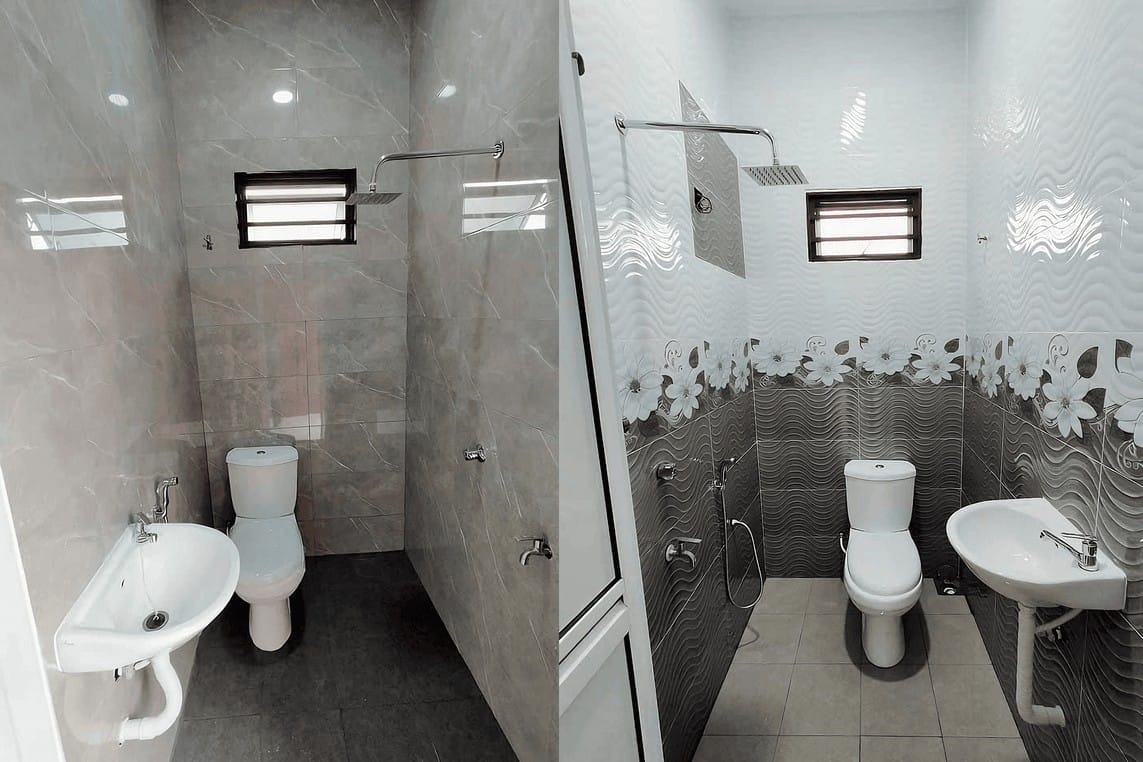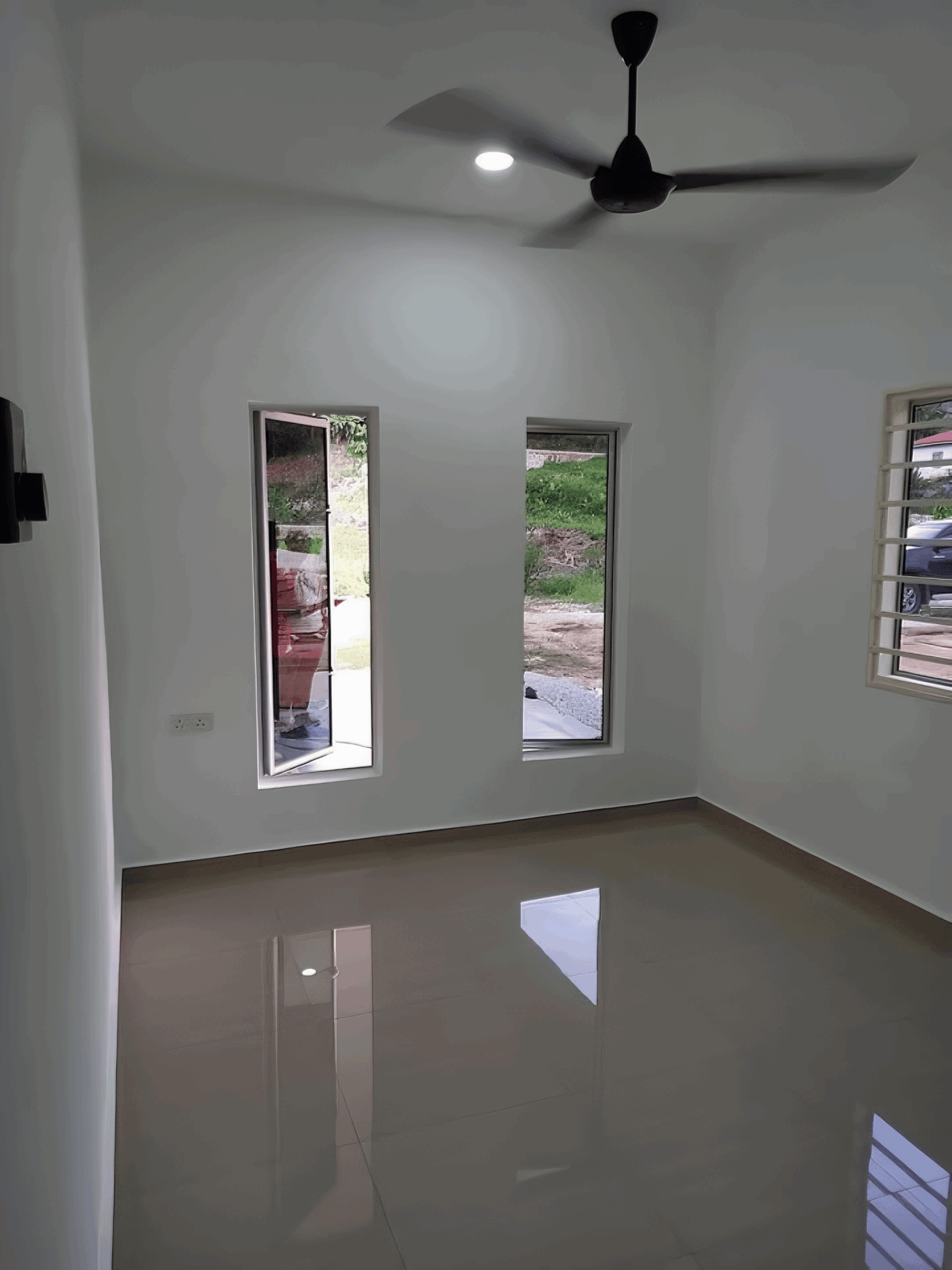In the bustling world of home construction, where dreams take shape and visions turn to reality, there’s one element that often gets overlooked in the excitement—contracts. You might be thinking, “Contracts? Really?” But hear us out! Transparent contracts are like the unsung heroes of a successful build. They’re not just boring documents filled with legal jargon, but rather the blueprints that lay the foundation for trust and clarity between homeowners and contractors. In Malaysia, where culture and community play vital roles, having open and clear communication is key. So, let’s dive into why transparent contracts can make or break your home construction project, ensuring you build not just a house, but a solid partnership along the way! 🏗️📜
Understanding the Concept of Transparent Contracts in Home Construction
Imagine diving into a home construction project without the fog of confusion clouding your vision! Transparent contracts ensure that everyone involved, from homeowners to builders, is on the same page. By laying out clear terms, expectations, and responsibilities, these contracts function like a roadmap guiding you through the construction journey. You can count on having a solid understanding of project timelines, costs, and potential risks. With everything laid bare, you can make informed decisions and feel more secure in your investment.
Here’s what transparent contracts typically include to foster clarity:
- Scope of Work: A detailed description of the tasks to be completed, materials to be used, and any specific designs requested.
- Payment Schedule: Clear breakdowns of how and when payments will be made, ensuring no surprises along the way.
- Change Order Procedures: Guidelines on how changes to the project will be handled, ensuring everyone stays informed and agrees upon any adjustments.
It’s worth considering the benefits of this openness. A well-structured transparent contract not only mitigates misunderstandings but also builds trust among all parties. When everyone is fully aware of their obligations, it cultivates a collaborative atmosphere where problems can be addressed promptly. Also, with tangible accountability, builders are more likely to adhere to schedules and quality standards, resulting in a home that aligns with your dreams. So, in the realm of home construction, transparency isn’t just an option—it’s the cornerstone of a successful and harmonious project!

The Importance of Clear Communication in Contractual Agreements
Clear communication in contractual agreements lays the groundwork for mutual understanding between homeowners and contractors. When both parties have a firm grasp of the specifics outlined in the contract, it minimizes the chance for misunderstandings that can lead to costly delays or disputes. Enshrining details such as timelines, budget allocations, and the scope of work in straightforward language ensures that expectations are aligned from the get-go.
Moreover, utilizing transparent language helps establish trust, which is vital in any construction project. Homeowners feel more secure knowing exactly what they are paying for, while contractors appreciate when their obligations are clearly defined. This transparency can foster a collaborative atmosphere, encouraging open dialogue throughout the process. Some key areas to focus on in your agreement include:
- Project Scope: Detailed description of work to be performed.
- Payment Terms: Clear breakdown of costs and payment schedules.
- Change Orders: Processes for any alterations during construction.
In addition to setting clear terms, a well-structured contract can serve as a reference point for resolving conflicts, should they arise. For example, incorporating timelines, project milestones, and completion dates can reduce the likelihood of delays. Below is a simple table summarizing key components of a transparent contract:
| Component | Description |
|---|---|
| Scope of Work | Outline of tasks and responsibilities. |
| Budget | Detailed cost breakdown and payment schedule. |
| Timeline | Start and completion dates, with milestones. |
| Change Management | Policy for any changes during the project. |

Essential Components of a Transparent Construction Contract
html
When diving into a construction project, knowing the basic components of a transparent contract can make all the difference. Firstly, clear scope of work outlines exactly what the project will entail. This includes details on design specifications, materials, and timelines. By pinning down these elements, both the homeowner and contractor have a mutual understanding, minimizing the chances of disputes down the line.
Another critical element is the itemized pricing structure. Instead of a single lump sum, an itemized breakdown presents costs associated with labor, materials, and any additional expenses. This clarity allows homeowners to see where their money is going, and facilitates conversations about budget adjustments if necessary. Transparency in pricing helps build trust and keeps everyone on the same page throughout the project's lifespan.
Lastly, integrating a dispute resolution clause can be a lifesaver. This section outlines how conflicts will be managed should they arise, whether through mediation, arbitration, or another method. That means fewer surprises and more structured paths to resolution. Having this in place not only reassures both parties but also encourages a more collaborative atmosphere, ultimately leading to a smoother and more successful construction experience.

Building Trust: How Transparency Mitigates Conflicts
When it comes to home construction projects, having clear lines of communication is paramount. Transparency in contracts fosters an environment where both parties, the homeowners and the contractors, feel secure in their agreements. By detailing every aspect of the construction process—from project timelines to material costs—these contracts eliminate room for misunderstandings that can often lead to disputes. When everyone knows what’s expected, it helps to quell the natural anxieties that can arise during such a significant investment.
Another important factor is that transparent contracts empower all parties involved. When homeowners and builders have access to full project details, they can make informed decisions without second-guessing each other’s motives. This can transform the contractor-client relationship from one that is occasionally fraught with suspicion to one characterized by mutual respect and collaboration. Issues like labor costs, timelines, and material choices should be discussed openly, allowing everyone to voice concerns and adapt as necessary, keeping the project on track.
Moreover, transparency doesn’t just benefit relationships; it can also save considerable time and money. A straightforward contract includes clear mappings for what happens if things go wrong—what are the costs of delays? How do we handle changes in scope? By clearly outlining these contingencies in a tabular format, both parties can easily reference and understand their responsibilities. This makes for a smoother workflow, minimizes conflicts, and ensures that issues can be resolved quickly, without the need for costly legal interventions down the line. Here’s a simple breakdown of key components that should be included in a transparent contract:
| Contract Component | Description |
|---|---|
| Scope of Work | Clear definition of what the project entails. |
| Timeline | Specific dates for start and completion. |
| Payment Terms | Details on amounts, due dates, and the payment method. |
| Revision Clause | Guidelines on how change requests are to be handled. |
| Contact Points | Key individuals to reach out to for queries or concerns. |

Setting Clear Expectations: The Role of Detailed Specifications
When it comes to building your dream home, having detailed specifications is like having a compass in unfamiliar territory. Clear expectations help keep everyone on the same page—from homeowners to contractors. By outlining particulars such as materials, design elements, and timelines, you create a roadmap that guides the construction process smoothly. It reduces confusion and miscommunication, ensuring that all parties understand their responsibilities and the project’s scope.
Moreover, detailed specifications serve as a protective shield during the construction journey. They help in defining quality standards and performance metrics, so you know exactly what to expect. This way, if something goes awry, you can refer back to the specifications and hold the relevant parties accountable. Here are a few key elements that should be covered in your specifications:
- Material Types: Clearly state what materials will be used throughout the project.
- Finishing Details: Specify the types of finishes and fixtures you want.
- Timeline Expectations: Outline key milestones and their expected completion dates.
To visualize the importance of specifications, consider the following simple table that highlights the consequences of vague versus detailed expectations:
| Scenario | Vague Expectations | Detailed Specifications |
|---|---|---|
| Quality of Work | Inconsistent | Consistent and High-Quality |
| Project Timeline | Delays Expected | On-Schedule Completion |
| Budgeting | Frequent Overruns | Within Budget |
In essence, having well-defined specifications isn’t just a good practice; it’s essential for laying the groundwork for a successful construction project. It encourages transparency, fosters trust between you and your contractor, and minimizes the chances of costly disputes. Remember, when everyone knows what to expect, you’re more likely to enjoy the building process and the amazing results that follow.

Cost Clarity: Avoiding Hidden Fees and Surprises
In the realm of home construction, clarity in pricing is paramount. When diving into a project, it’s easy to fall into the trap of initial low estimates that mask the true cost of building. To steer clear of unwelcome surprises, it’s crucial to demand a detailed breakdown of expenses from your contractor. A transparent contract should illuminate not only the primary costs involved but also ancillary expenses that could arise throughout the construction process. This way, you’ll have a clearer picture of your financial landscape and avoid any sudden spikes in your budget.
It’s also essential to address common hidden fees that can sneak up on homeowners. Here’s a quick list of potential costs to inquire about before signing on the dotted line:
- Permit Fees: Check if these are included in your quote.
- Material Costs: Make sure you’re clear on what materials are covered and if upgrades will affect pricing.
- Change Orders: Understand how modifications to plans will impact your budget.
- Labor Costs: Look out for any hidden labor charges or overtime fees.
Consider this simple table that outlines typical construction project expenses you might want to discuss:
| Expense Type | Estimated Cost (MYR) |
|---|---|
| Site Preparation | 5,000 – 15,000 |
| Foundation | 20,000 – 50,000 |
| Framing | 30,000 – 80,000 |
| Final Touches | 10,000 – 30,000 |
By laying all the financial details out in the open from the get-go, you set a solid foundation that not only helps with budgeting but also fosters trust between you and your contractor. Ultimately, it’s about ensuring that your dream home doesn’t come riddled with unexpected costs and complications. The clarity you foster through transparent contracts can make all the difference between a smooth journey and a bumpy road in your home construction adventure.

Legal Protections: Ensuring Fairness in Your Contractual Agreement
When embarking on a home construction project, understanding the legal framework surrounding your contract is crucial. This framework provides a safety net that outlines your rights and responsibilities, ensuring that both parties—homeowners and contractors—are on the same page. Having a legally sound contract can safeguard against misunderstandings and disputes down the line, which can be time-consuming and expensive to resolve. With a transparent contract in place, everyone knows what to expect, making it easier to focus on your dream home rather than potential legal battles.
Key legal protections include clauses that address payment schedules, project timelines, and quality standards. By laying out these details explicitly, both homeowners and contractors can avoid nasty surprises. For example, a well-drafted contract may include provisions that outline the consequences for late payments or incomplete work. Having these stipulations documented makes it easier for all parties to understand their obligations, ensuring a smoother project flow. Here are a few essential elements that should never be overlooked:
- Scope of Work: Clearly define what work will be done.
- Cost Estimate: Provide a detailed breakdown of costs.
- Change Orders: Specify how changes to the project will be handled.
- Termination Clause: Determine conditions under which the contract can be terminated.
Moreover, it’s beneficial to incorporate a dispute resolution mechanism within the contract. This ensures that if disagreements do arise, there’s a clear process for resolving them, whether through mediation, arbitration, or litigation. Having this in place protects both parties and promotes a more favorable working relationship. Here’s a quick look at some common dispute resolution methods:
| Method | Description | Pros | Cons |
|---|---|---|---|
| Mediation | Involves a neutral third party. | Confidential, affordable. | No binding decision. |
| Arbitration | Third-party makes a final decision. | Faster and less formal than court. | Limited appeal options. |
| Lawsuit | Formal court proceedings. | Legally binding outcome. | Time-consuming and costly. |

Best Practices for Implementing Transparent Contracts in Your Project
Implementing transparent contracts in your construction project is all about clear communication and trust. First and foremost, establish open lines of communication between all parties involved. This means frequent updates and accessible channels for inquiries. Share information transparently to ensure that everyone is on the same page regarding timelines, budget constraints, and construction details.
Next, it’s crucial to clearly outline roles and responsibilities in the contract. This avoids confusion and holds everyone accountable. Create a checklist of key elements to include, such as:
- Scope of Work: Detailed description of what will be done.
- Timeline: Specific deadlines for each phase of the project.
- Payment Schedule: Transparency on when payments are due and under what conditions.
- Change Orders: A process for handling any modifications to the original plan.
Lastly, document everything. Utilize technology to maintain logs of communication and decisions throughout the project. Consider creating a shared online platform where all stakeholders can access contracts, amendments, and updates. This not only enhances efficiency but also builds trust among team members and helps mitigate disputes as they arise. Remember, a well-organized document trail can be your best defense in case of misunderstandings.
Insights and Conclusions
As we wrap up our exploration of the role transparent contracts play in successful home construction projects, it’s clear that open communication and clarity are truly the cornerstones of building your dream home. Whether you’re a first-time homeowner or a seasoned investor in Malaysia’s bustling construction scene, understanding your contract inside out can save you from a world of headaches down the line.
Remember, it’s not just a piece of paper. It’s a roadmap that guides both you and your contractor through each phase of construction, helping to set expectations and reduce misunderstandings. With transparent contracts, you can foster a positive relationship with your builders, ensuring everyone is on the same page and working towards a common goal.
So, the next time you embark on a building journey, take the time to delve into those details, ask questions, and champion a contract that brings everyone into the light. Your future home deserves nothing less! 🏡✨







